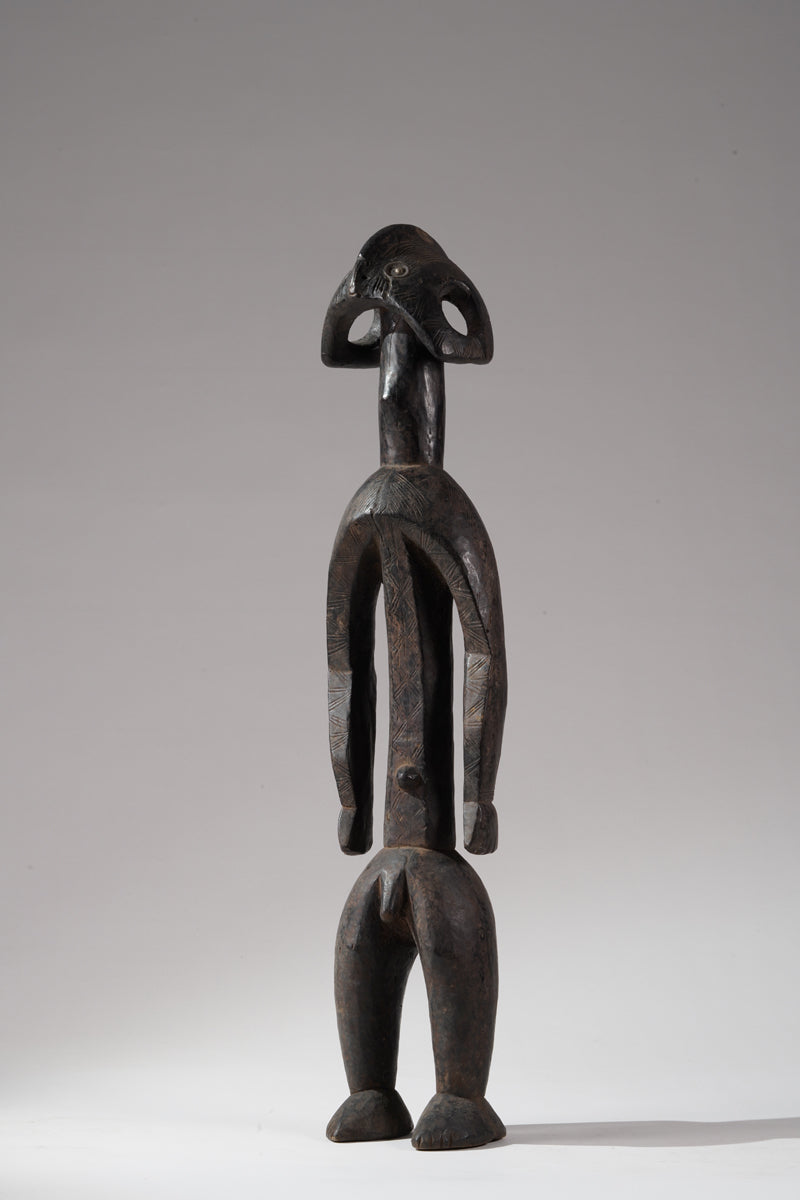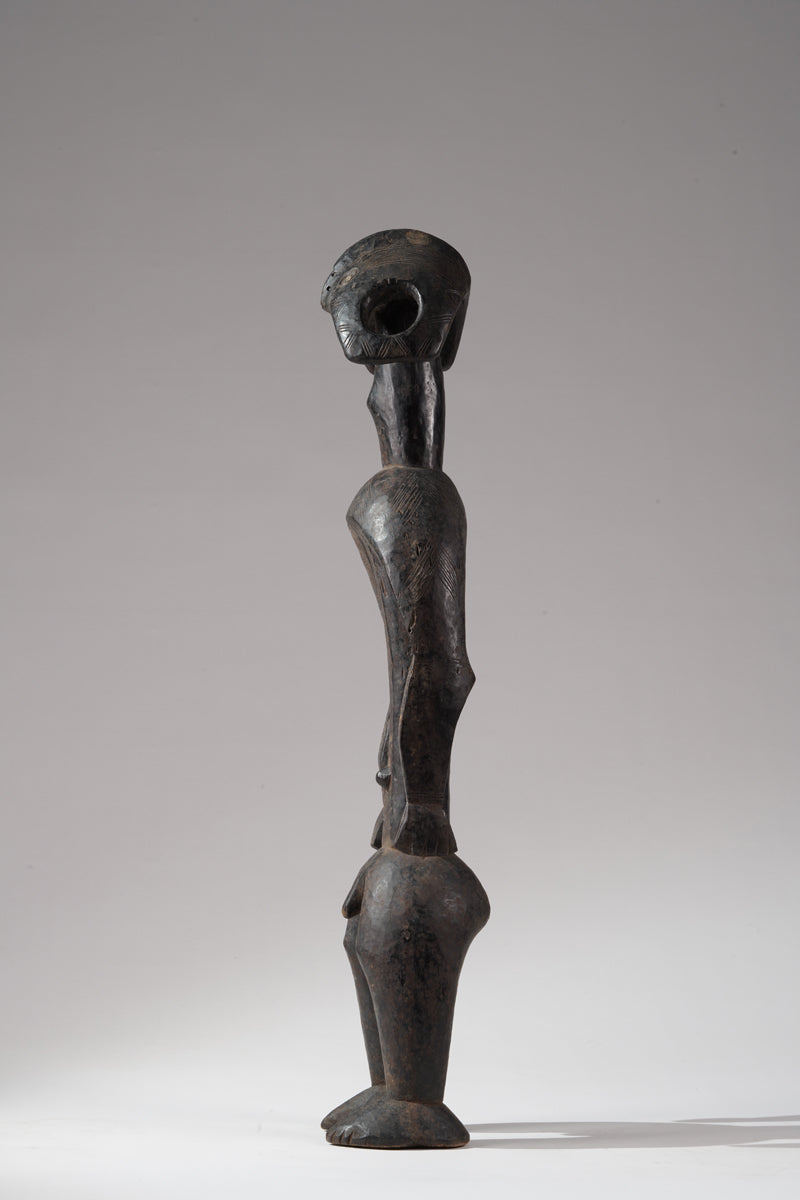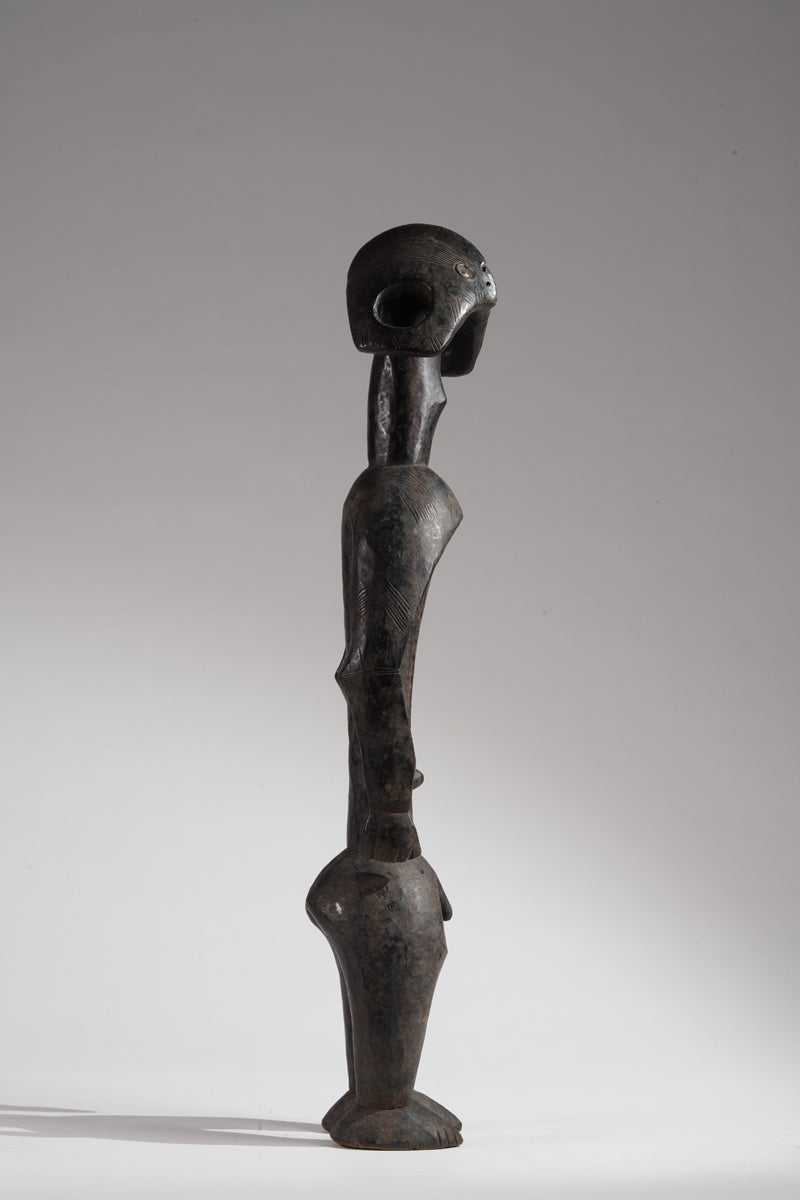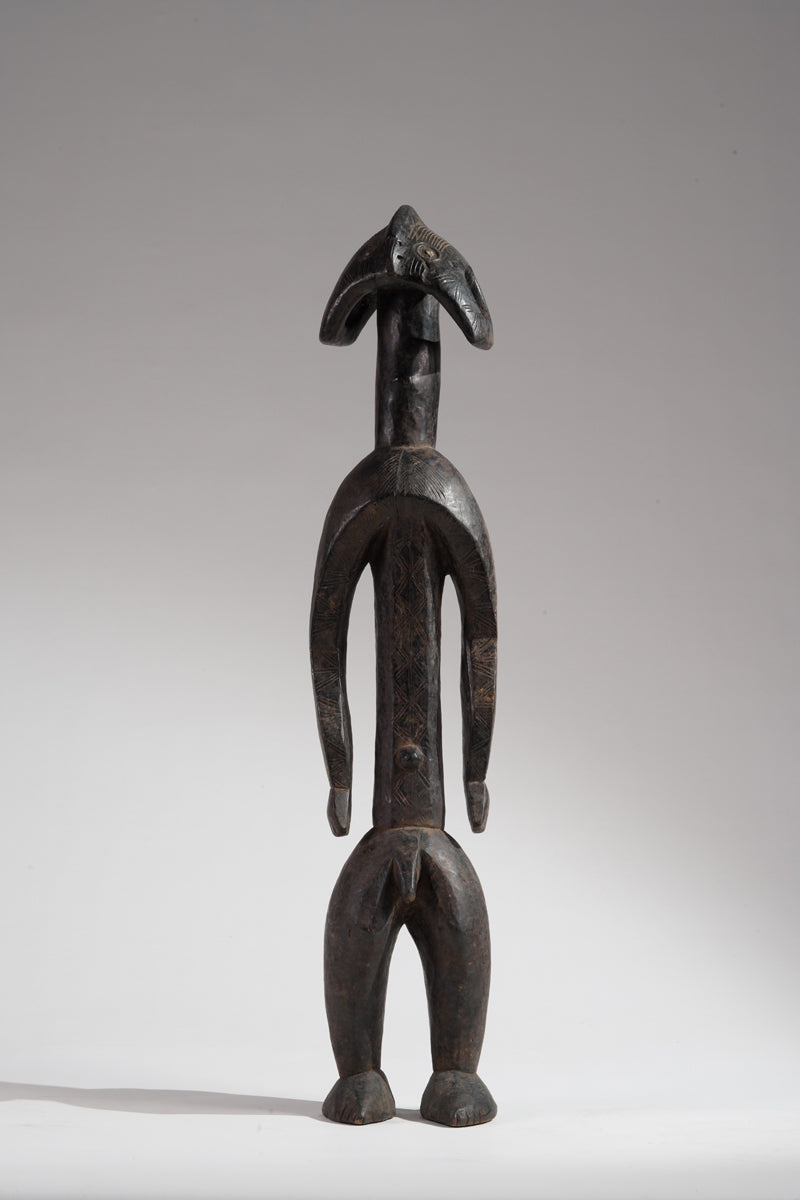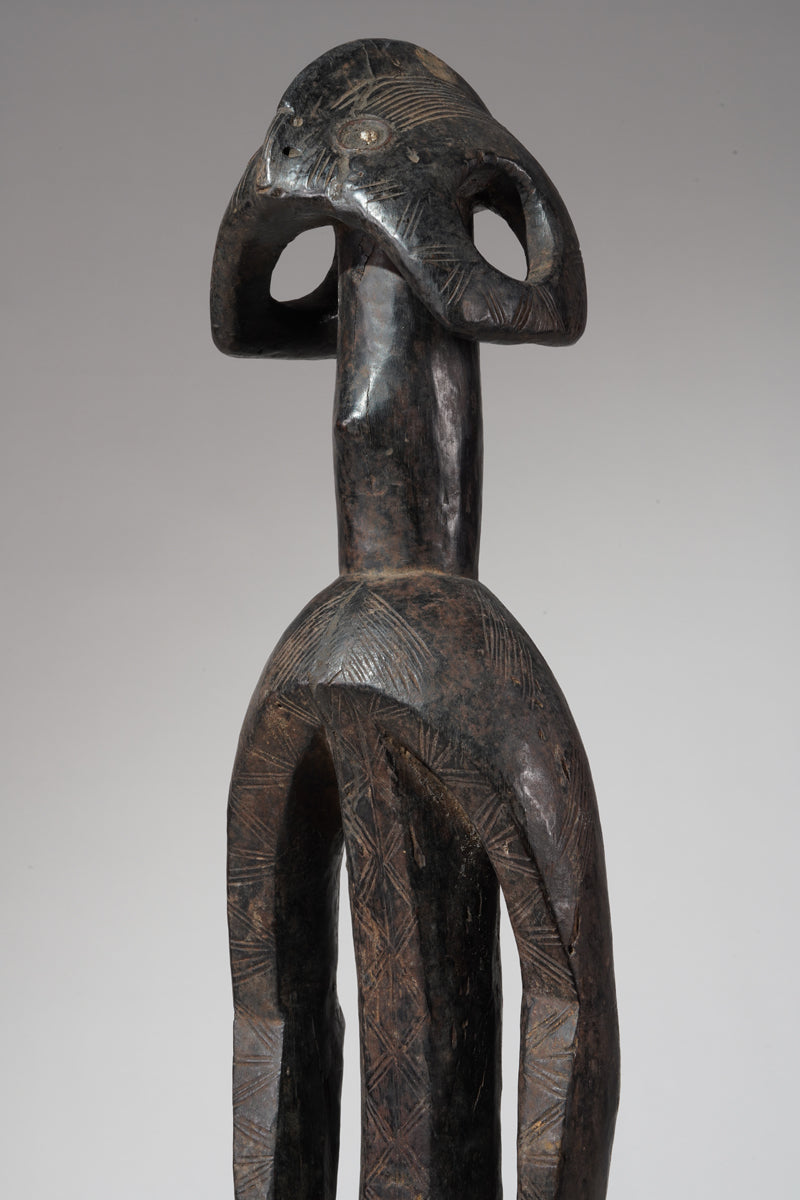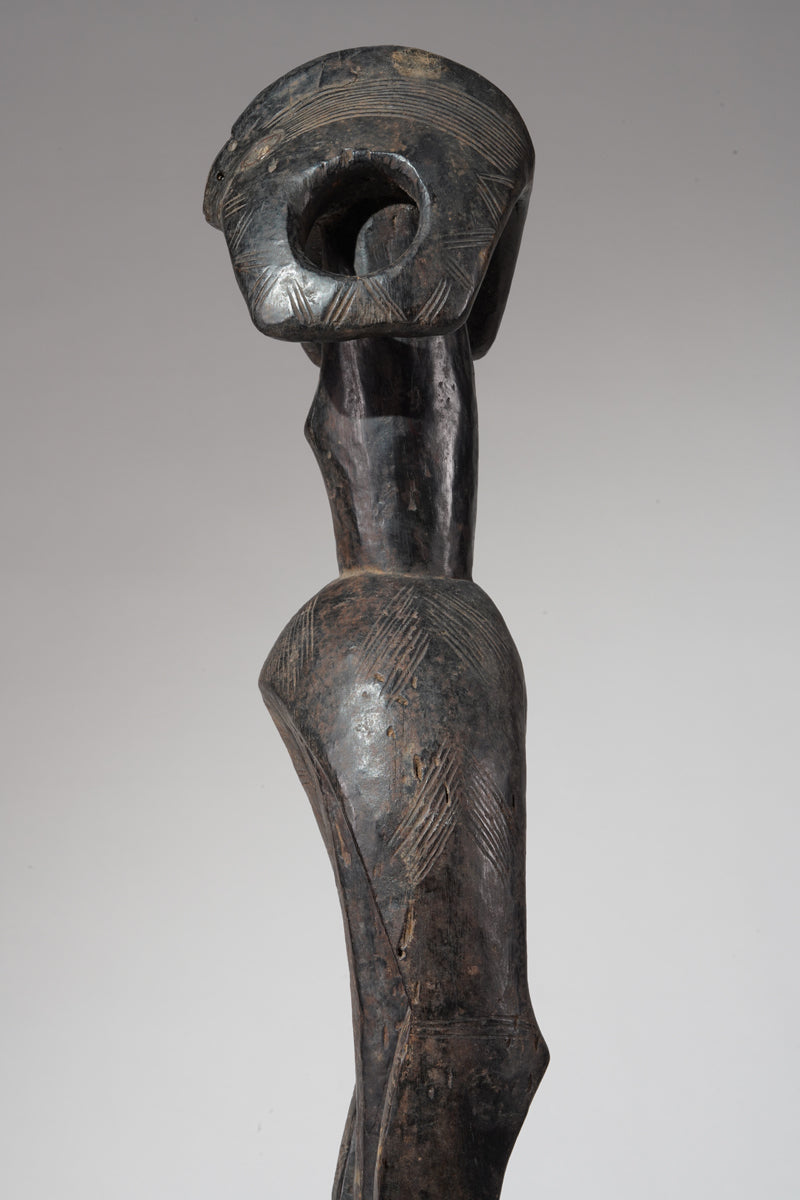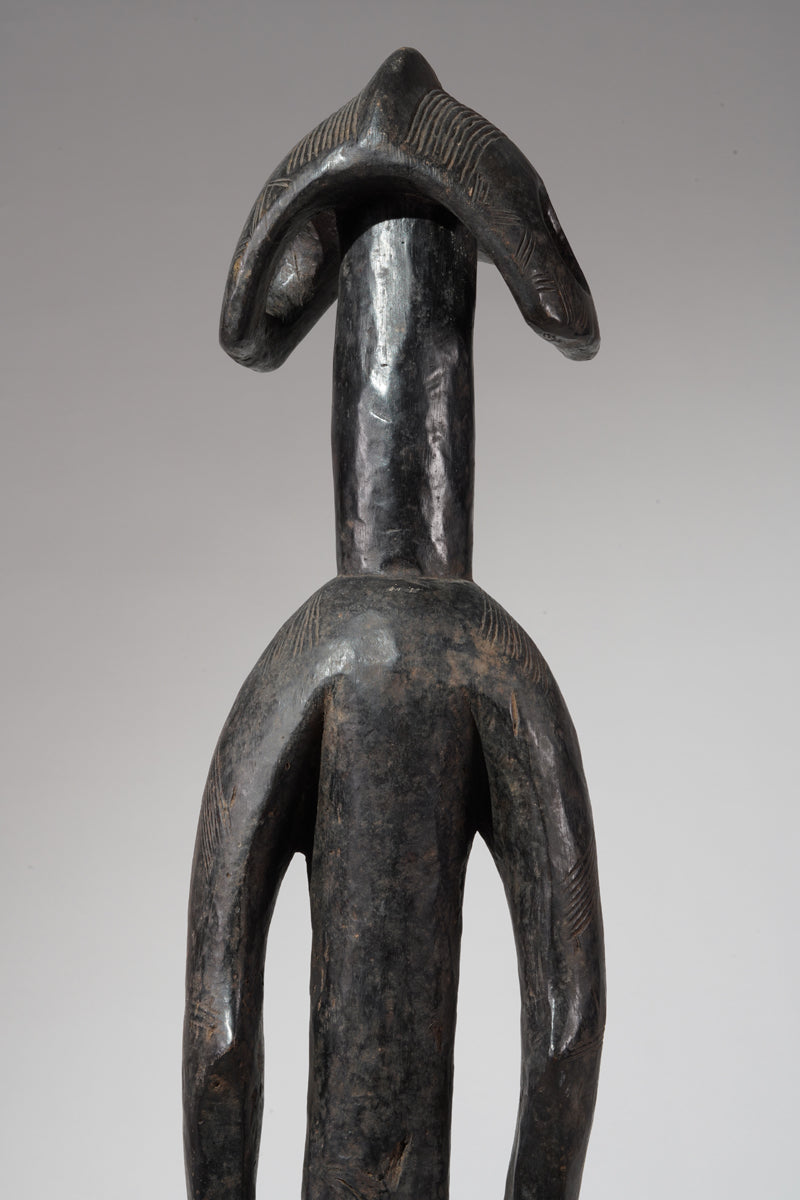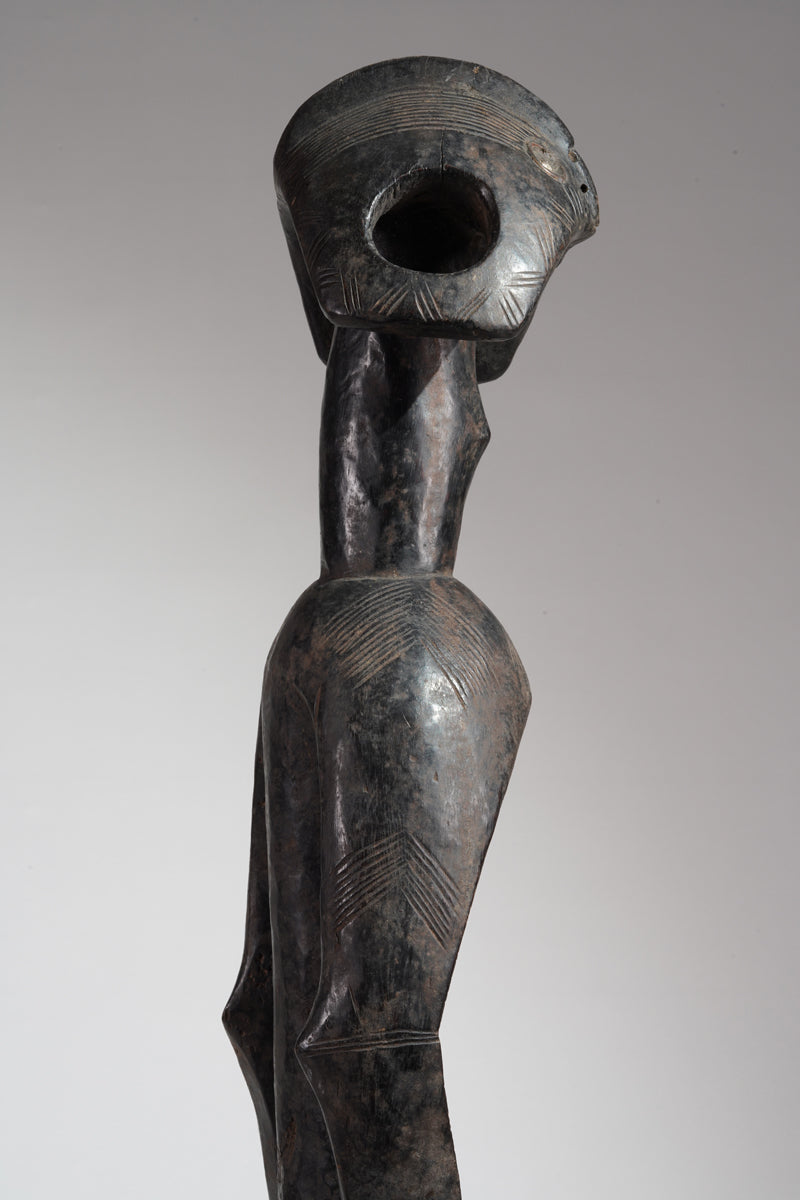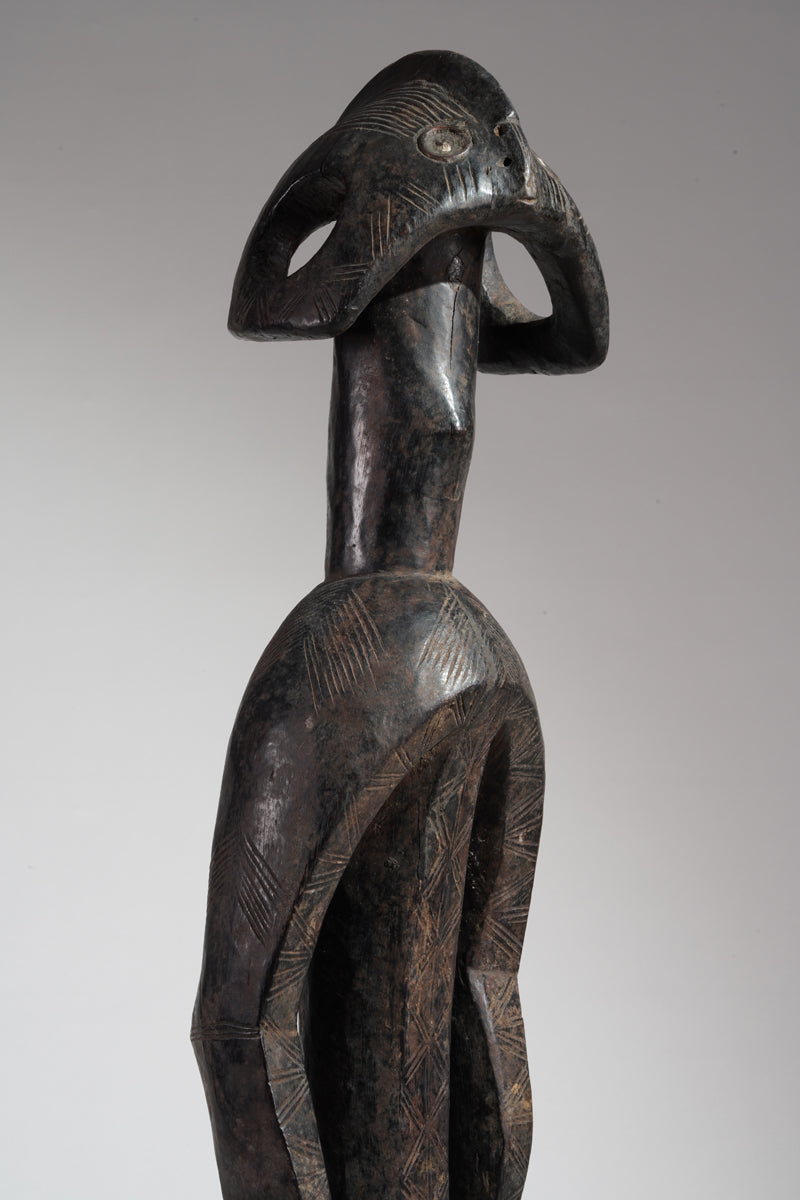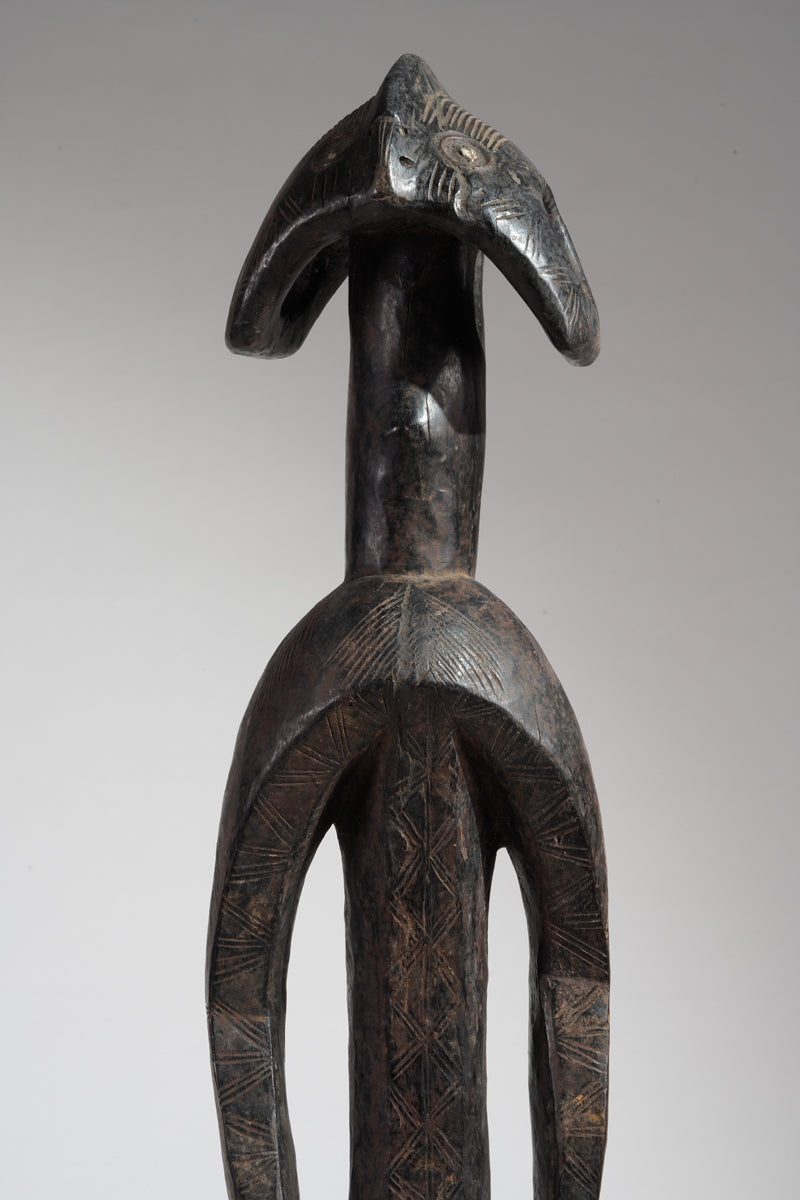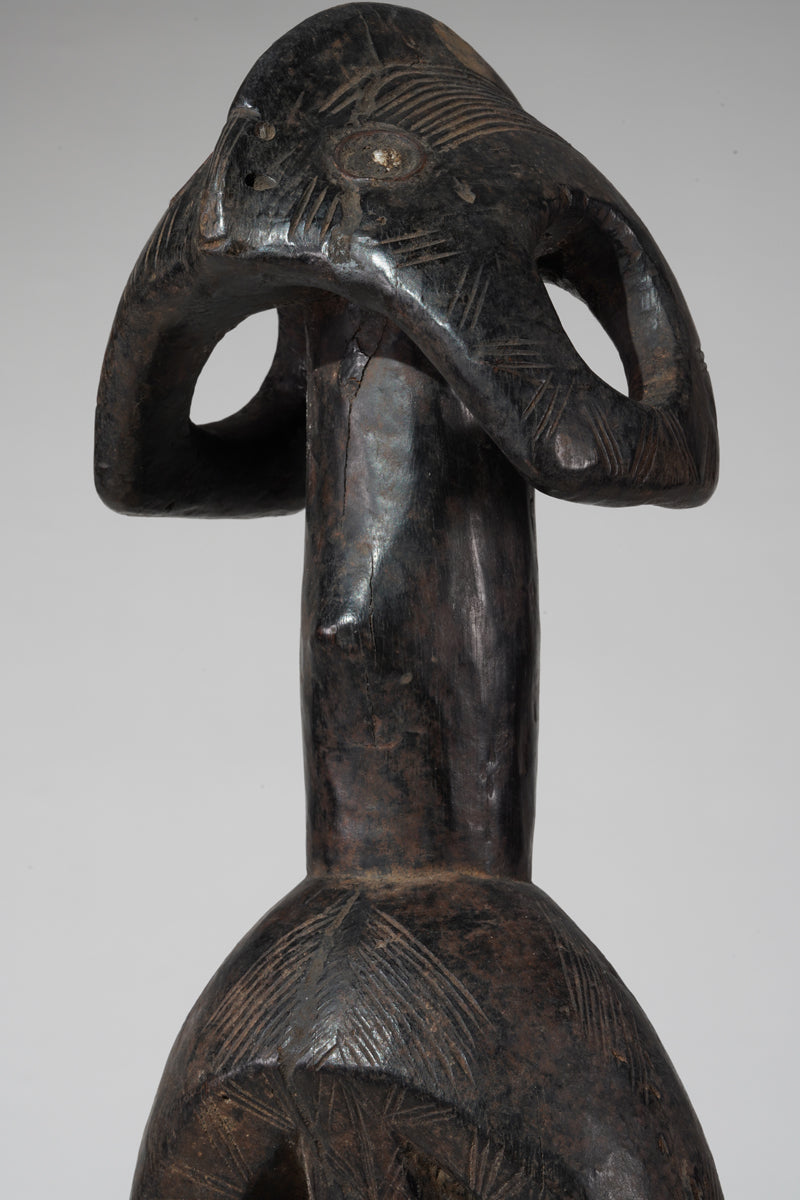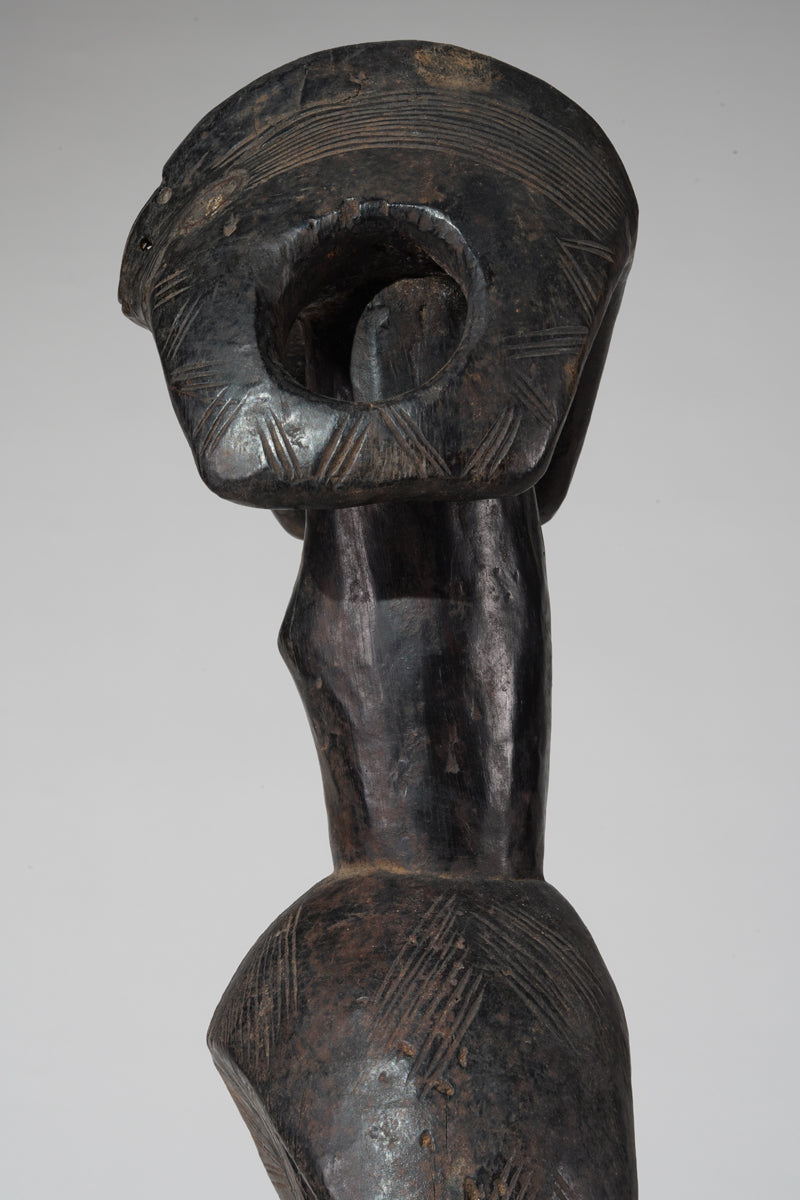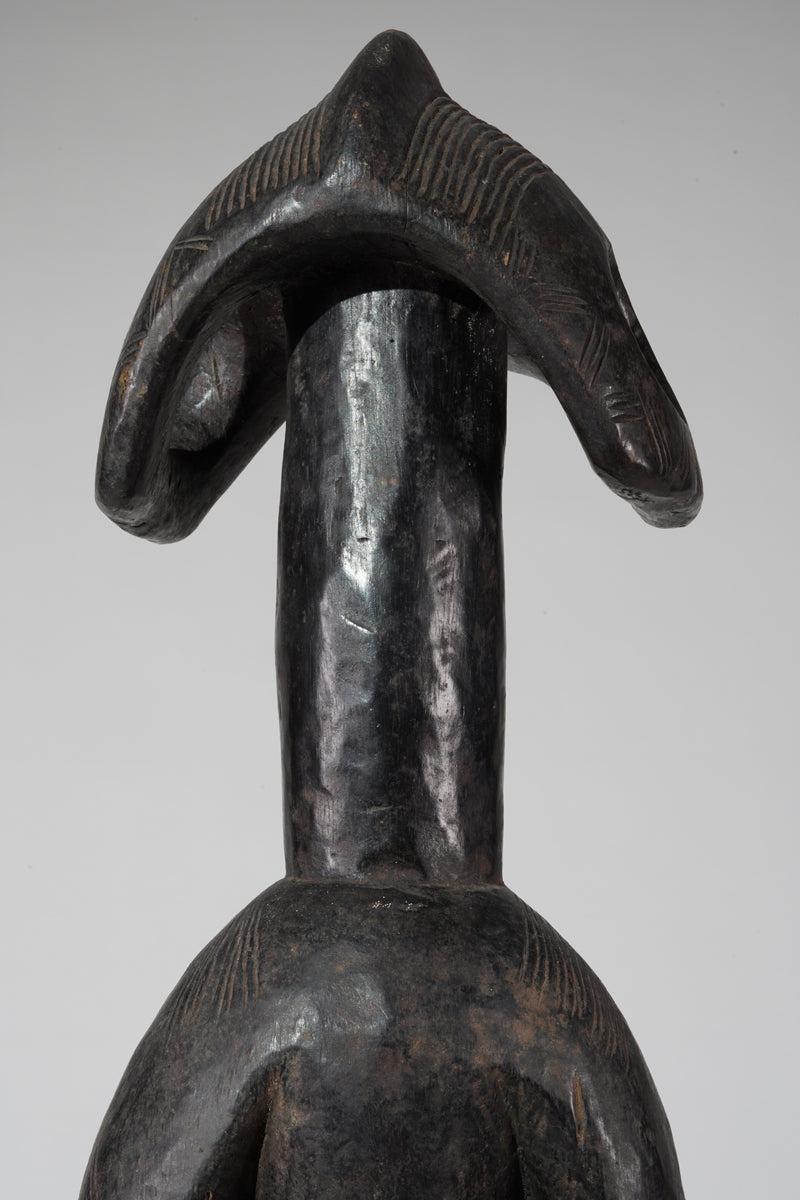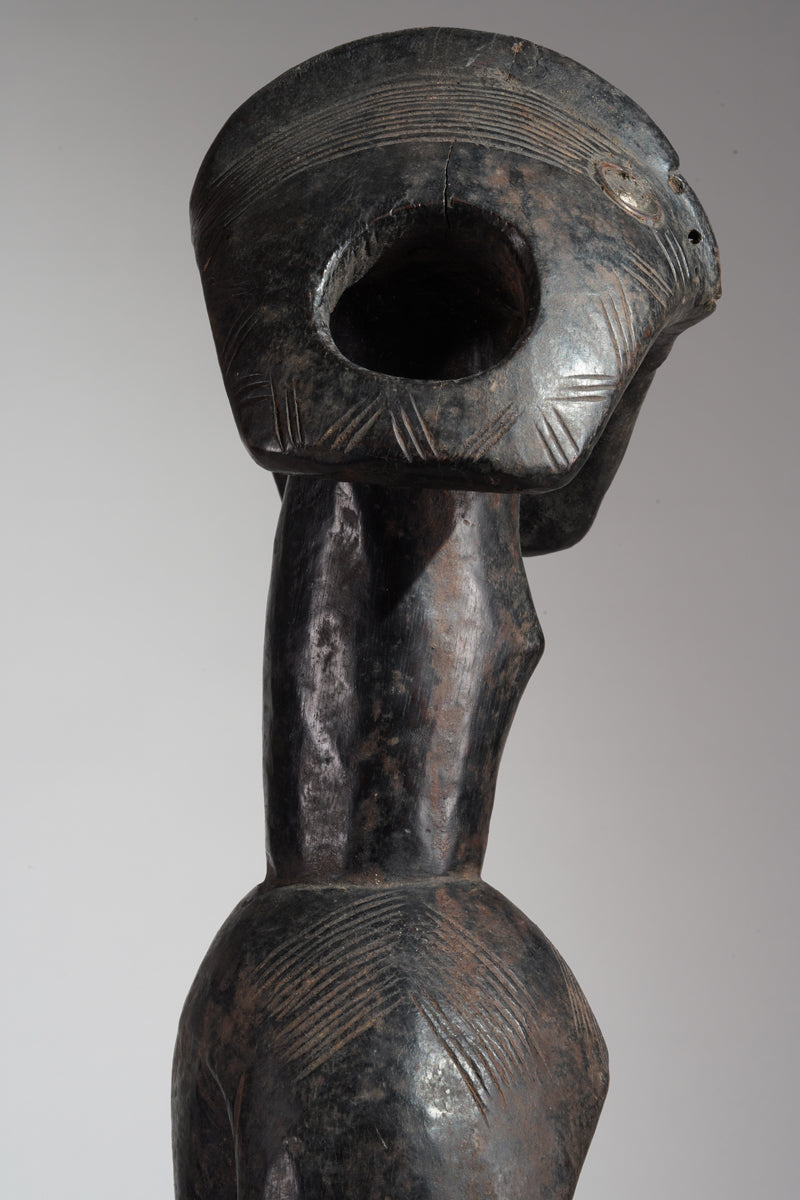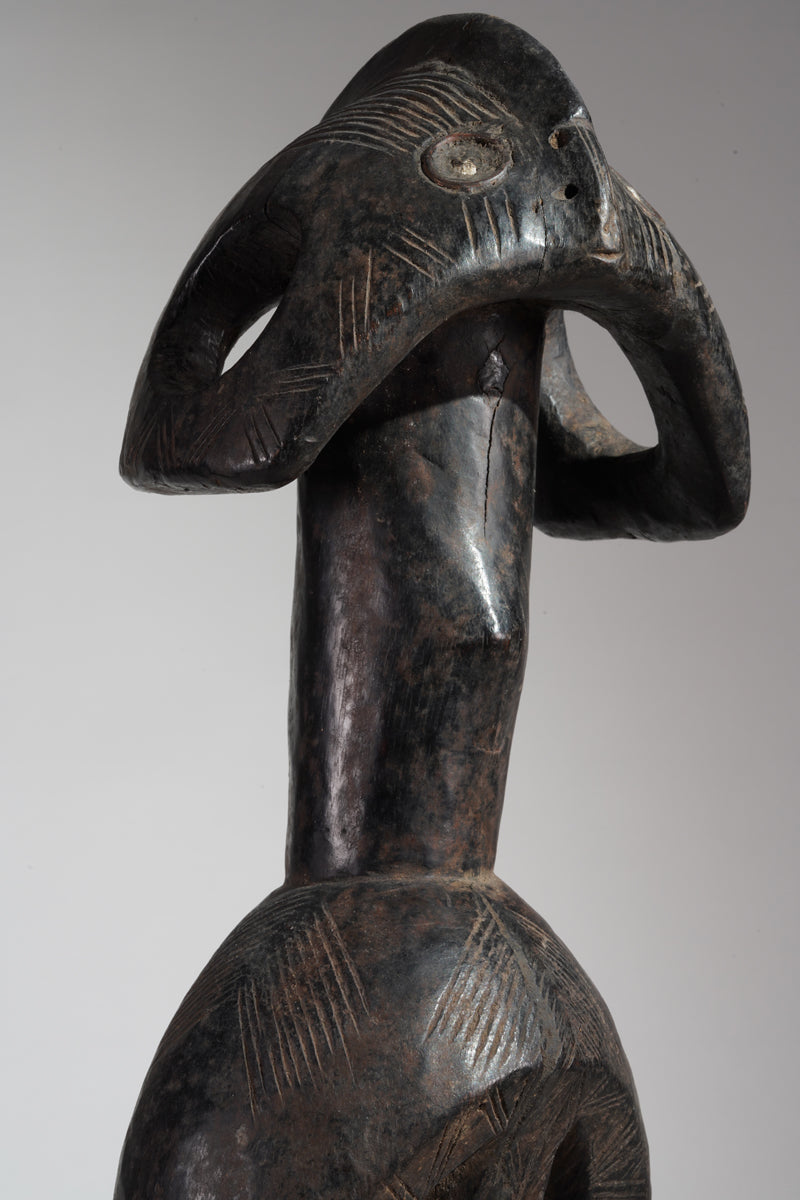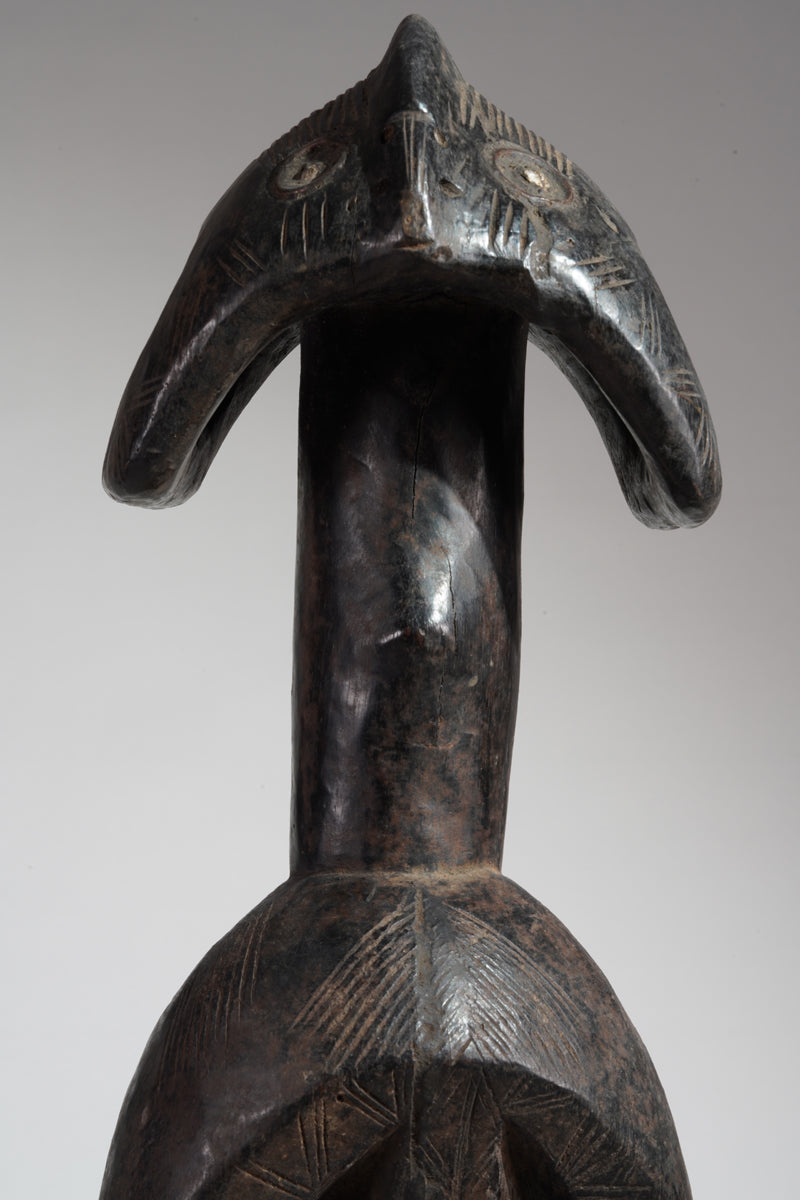wolfgang-jaenicke
A Mummy sculpture
A Mummy sculpture
Couldn't load pickup availability
A Mummy sculpture, Nigeria. Certificate of origin and provenance.
“It was not until the late 1960s that statues from the Mumuye culture of northeastern Nigeria appeared on the European art scene. Their impact was immediate and profound: African art aficionados marvelled at Mumuye artists’ abstract interpretation of the human body, which recalled the approach to anatomy by artists of the Cubist and Expressionist movements. Indeed, anthropomorphic Mumuye figure sculptures demonstrate an astonishing range of variations, testifying to their makers’ unbridled creativity and limitless inventiveness.
Here, a meticulous analysis of the extraordinary forms of Mumuye figures—paying attention to their striking inherent sense of motion—leads to a new style of classification that recognizes different workshops and even the hands of individual masters. A summary of the scant fieldbased studies discusses the figures’ primary role as emblems of status and rank, their connections to ancestral veneration, and healing and divination practices. Through a selection of masks and other objects, this book reveals the beauty of Mumuye figurative sculpture.”
Source: Mumuye. Sculpture from Nigeria, The Human Figure Reinvented, by Frank Herremam, Texts by Constantine Petridis, 2016.
From hundreds of examples of primitive art exhibited in the British Museum, Moore has selected and drawn many works that are now considered to be among the highest quality African and Oceanic art ... The sculptor's eye recognized this as early as the mid-1920s. Alan, G. Wilkonson, page 608 ff, Primitivism in 20th Century Art, Prestel, edit.William Rubin, third ed., 1996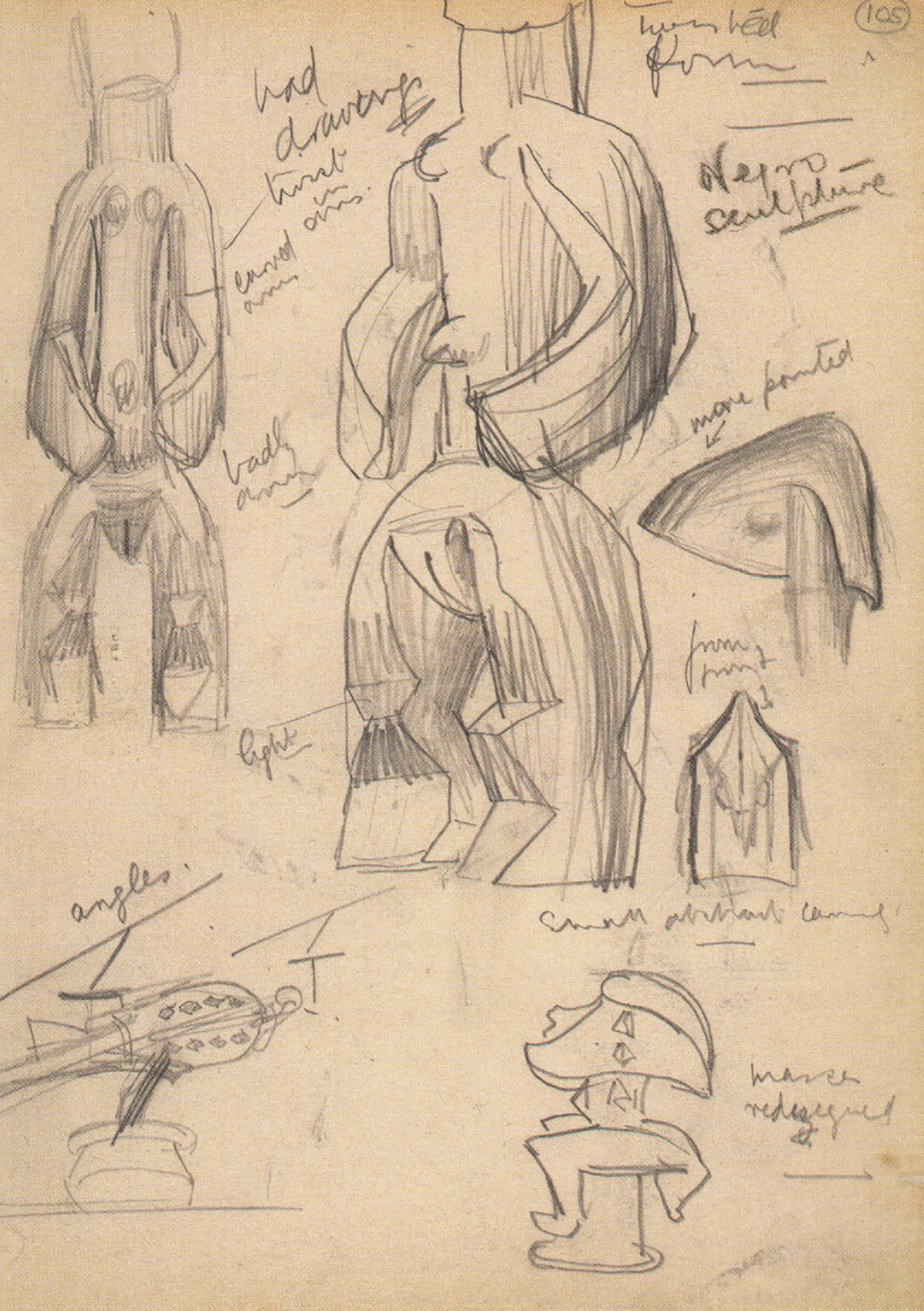
British Museum, sketchbook of Henry Moore, of the 1920th Henry Moore, drawing 1920th, British Museum, last photo.
wj
Height: 90 cm
Weight: 3,33 kg



















